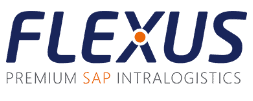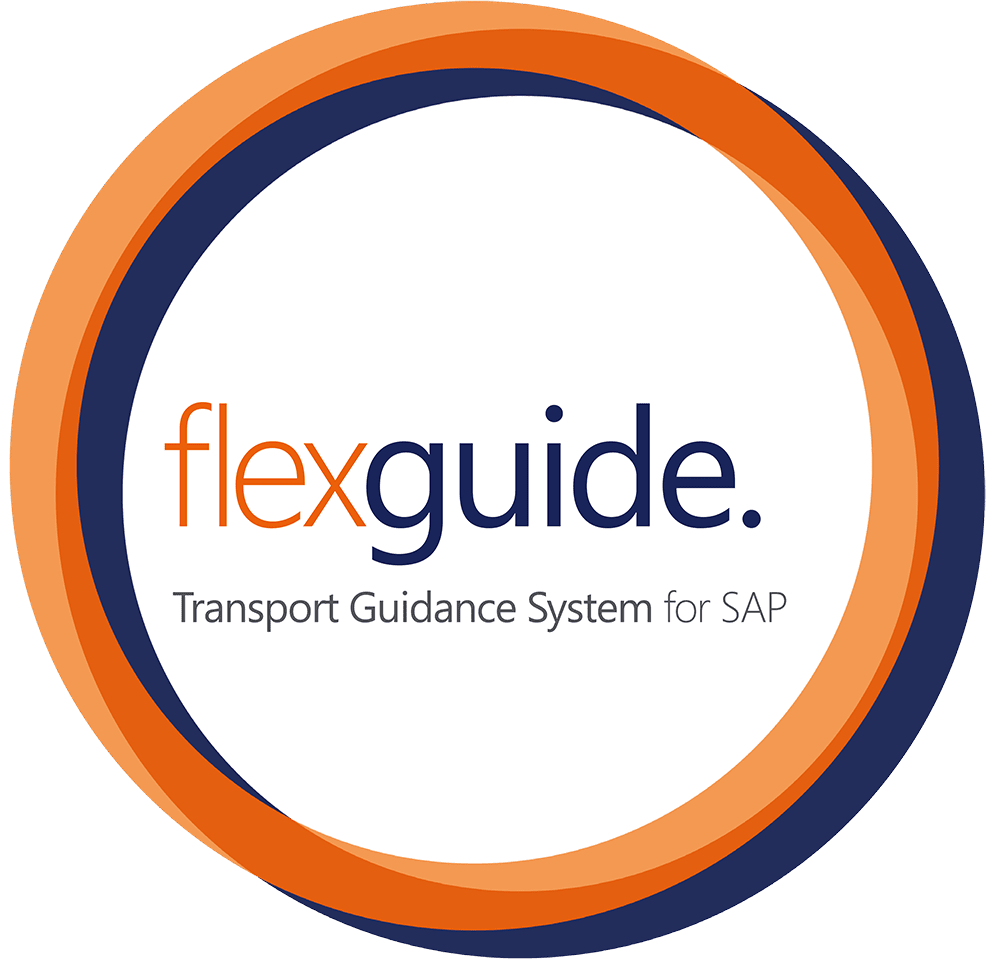Since July 2020, Flexus AG has been participating in the FlowPro research project, which is funded by the German Federal Ministry of Transport and Digital Infrastructure and the mFUND research initiative. Under the leadership of Emqopter GmbH, the drone manufacturer from Würzburg, companies and universities located and operating throughout Germany are participating in the project.
In short, the goal of this project is to create a logistics framework for ground- and air-based Automated Guided Vehicles (AGVs) by allowing them to interact organically with each other.
ASTI Mobile Robotics GmbH, a manufacturer of Automated Guided Vehicles, and Emqopter are responsible for the role of the agents (the AGVs) involved . Both companies will be presented in more detail later. AI and security components are primarily designed by FHWS, the University of Applied Sciences Würzburg-Schweinfurt. The second participating university, htw saar, is developing the communication architecture and providing a 5G test field in Merzig. It is also contributing by bringing in its expertise in the implementation of real-life use cases. As the largest participating company, Siemens AG is contributing with its know-how in the field of IoT and is the driving force behind the architecture of the underlying agent system. Flexus ensures the applicability in the project. The focus here is on the interface to the ERP system to make the FlowPro system fit for intralogistics in particular.
Automated transports for the logistics of the future – under this aspect, we would like to offer you, together with the project partners Emqopter and ASTI Mobile Robotics, a fascinating insight into how both airborne and ground-based Automated Guided Vehicles will be used in the future.
EMQOPTER – Project partner for airborne automated guided vehicle systems & drones
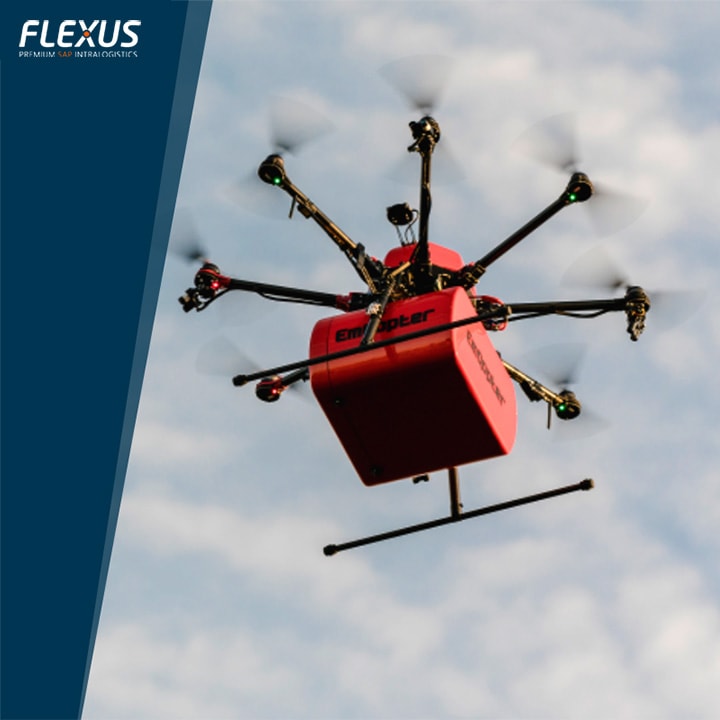
Emqopter is a developer and provider of unmanned aerial vehicle technology for industrial and civil applications. The company’s core competency is in the embedding of intelligence into autonomous systems in the form of complementary sensors (sensor fusion) and efficient software algorithms for precise situational awareness. The portfolio with innovative products from Emqopter includes a training system that is used in teaching, research and development at universities and secondary schools around the world. Furthermore, it is possible to connect complementary Plug-and-Play sensor modules for drones for obstacle detection, collision avoidance, active distance control, object detection and / or automatic landing site detection.
With complete unmanned aerial systems such as the delivery drones, the first of their kind in German airspace, and the Quanipulator, a drone with a modular gripper arm, Emqopter has other products in its portfolio that are intended to optimize logistics in the future and in the long term. Additionally, the drone manufacturer offers the development of individual systems following a modular principle. Drawing from its expertise, Emqopter is hosting the upcoming Drone-MEET-Up which will focus on the integration of drones into existing infrastructure. The interactive workshop format will focus especially on regulatory frameworks, the user/process perspective, and technical aspects. If you are interested, you can find more information about the event on https://www.emqopter.de/de/featured/dmu2021/.
ASTI MOBILE ROBOTICS – project partner for ground-based automated guided vehicle systems
ASTI represents an international group of mobile robotics companies dedicated to helping their customers become more competitive. They develop, produce, install and maintain a wide range of automated intralogistics systems that autonomously move materials and products within industrial facilities. Their work has resulted in systems such as the dual guidance system for Automated Guided Vehicles and the EasyBot model series. The platform model series can turn on the spot due to its excellent maneuverability, compact design and omnidirectional movements.

This innovative collection of robots meets business requirements in terms of operational flexibility, responsiveness, spikes in demand, productivity and safety, and delivers racks, carriers, boxes or hanging goods in confined spaces and narrow aisles. Thanks to smart navigation technology and intelligent software, the Automated Guided Vehicles by ASTI can handle orders with multiple sources and destinations to satisfy the high demands of your logistics operations. If you are interested, you can find more information on https://www.astimobilerobotics.com/de/.
Challenges and pitches in the project
The goal is to help shape the micromobility of the future. In this respect, the project partners certainly do not fall short of promising pitches. We would like to present these to you in more detail below:
Modern Production
Modern products become more and more fragmented and complicated. On top of that, the distribution channels become increasingly diversified, and in some cases the industry even delivers directly to the retail customer. Meanwhile, it is necessary to maintain quality and ensure a high level of delivery reliability. This is why small batch sizes are steadily growing in popularity in modern logistics. It goes without saying that deliveries of small batches are also increasingly important for the production itself – keyword “emergency delivery”. The sight of almost empty trucks or even cabs being loaded with parts that are critical for production is becoming all the more common. In such cases, the urgency clearly trumps the economy of the transport.
Even in-plant deliveries require, due to the modularization of the production stages, more agile and increasingly flexible replenishment of the production units among each other. One way of implementing this is through the use of AGV systems.
Traffic network decongestion or expansion
Another aspect is the establishment of new delivery routes in a purely local sense. In larger production complexes, such as the Audi plant in Ingolstadt, the existing infrastructure is already so overloaded that new ways are being sought to deliver goods into and out of the plant. This is another case where it makes sense to choose the means of transportation according to the batch size in order to avoid congesting the access roads with trucks, each of which transports only one package. or traffic jams caused by the use of forklifts can therefore be avoided. Moreover, for small batch sizes especially, it makes sense to use autonomous drones to conquer the airspace as a delivery route. This has even been tested inside factory buildings. [Q1] But even the use of ground-based AGV systems will help with the decongestion of the internal traffic routes when used with high frequency due to permanent and usually error-free transports. Potential accidents or traffic jams caused by the use of forklifts can therefore be avoided.
Climate Change
The vast majority of goods deliveries are still made by trucks. In this context, not only the ever-increasing fuel costs must play a role, but also the environmental impact. A truck, for example, typically runs on diesel, which produces a high level of particulate matter pollution for local residents. At the same time, however, it also exhausts huge amounts of CO2; according to the German Federal Environment Agency, a truck loaded with one ton of fuel will emit 113 grams of greenhouse gas per driven kilometer. [Q2] Projected over a distance of 100 kilometers, this amounts to ten kilograms or about six cubic meters of greenhouse gases. If one considers the fact that more than every third run by a truck is an empty run, one can imagine the monetary and climatic savings potential that exists. [Q3] Added to this come runs that are not empty, but deliver only small batches. Route optimization, empty run prevention, on-the-road pickup and an intelligent battery management system reduce energy consumption and help to use valuable resources wisely.
Implication for intralogistics
Although the focus of FlowPro is on intralogistics, the boundaries to logistics outside of plants are becoming increasingly blurred, so that the aforementioned aspects are also becoming increasingly important here. As a result of dense development and urbanization, factories and plants that were once located on the periphery of cities are now often located in the middle of the city center or are surrounded by streets. As a result, the only option for expansion is often to open another factory building on the other side of the street or even on what is now considered to be the city periphery.
Similarly, some plants, such as that of the Audi plant in Ingolstadt, have grown considerably over the years and now possess their own postal codes as consequence of their sheer size. In technical terms, the movement of goods within the plant still counts as intralogistics, although this is also often carried out by trucks.
The so-called “Ship to Line” processes can be seen as a mixture of the ideas of the previous paragraphs. In this case, the supplier makes the material directly available to production, which eliminates the need for the buffer storage. [Q4] In an ideal scenario, this process is only used with suppliers that are close to production in order to keep fluctuations in delivery times (e.g. construction sites, accidents) and reaction times related to additional requirements to a minimum. Because of this geographical adjacency between supplier and production as well as the strong interdependence of both, one can almost refer to it as a quasi-intralogistics here.
FLOWPRO – Decentralized (intra) logistics network with autonomous transport units
The FlowPro network is intended to provide a cost-effective and environmentally friendly solution to the challenges described above. It should be mentioned here that more and more autonomous transport units are already being used in the industry. Nowadays, these are usually ground-based but the emerging research on aerial drones (even for long distances) offers a welcome addition in the foreseeable future. These would be especially useful for emergency transportation since they use their own infrastructure rather than the already congested roads or streets.
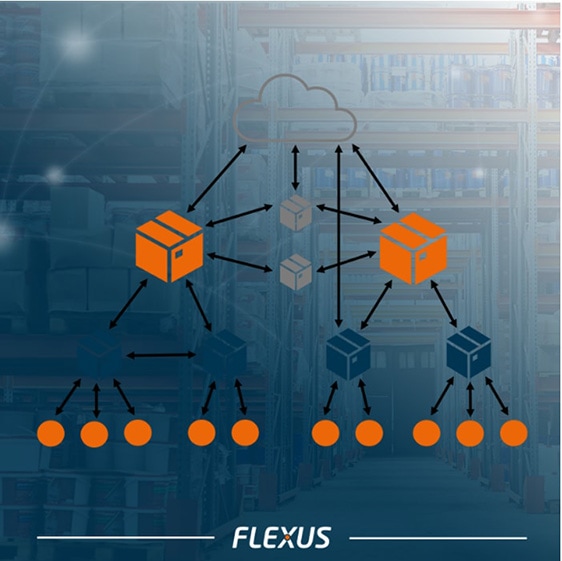
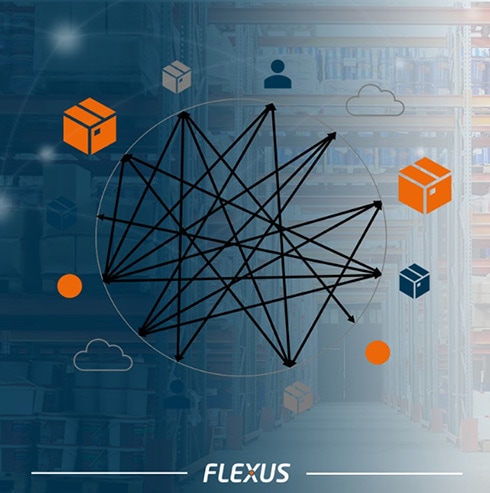
Within FlowPro, there will be no central identity that distributes transport tasks and therefore handles the delivery planning. Instead, a transport task will be posted to the FlowPro network and transport units will then compete for the task by submitting a bid. This bid again reflects how efficiently the respective AGV can perform the transport. In this case, different AGVs can coordinate and execute a transport together with each taking over a section of the route. This may even be necessary, for example, due to the specified range limitations of the individual AGVs.
The lack of a centralized management unit makes the system more resilient to malfunctions. Although individual transport units can still stop working, the others can continue to work normally as far as possible. Additionally, the remaining transport units can quickly compensate for a failure. This does not require a replanning of the entire system, but only a local reorganization.
Just as the failure of transport units in a decentralized system can be easily mitigated, the integration of additional participants or, in general, the scaling of the system, is not very costly. Regardless of whether another factory or even individual AGVs need to be added, they basically only need to be included in the network. It is not necessary to adapt the logic or the program code of FlowPro.
Decentralization also means that the computing load will be shared. In other words, a central server will not have to handle the entire logistics alone; instead, the computing load will be shared among the system participants. Furthermore, not only is the calculation of the bid left to the respective transport unit but also the type of calculation (within certain rules, of course). As a result, the considered level of detail that goes into the bid is determined individually for the transport unit. A drone, for example, must take wind speed into account, a ground-based AGV rather not.
The first anniversary of the project launch was in early July 2021. At this point, the first ideas for a demonstrator are starting to take shape. More detailed information on this and other aspects of FlowPro will be presented in subsequent articles.
Sources
https://www.produktion.de/technik/drohnen-in-die-intralogistik-gefluegelter-lieferservice-108.html
https://www.umweltbundesamt.de/themen/verkehr-laerm/emissionsdaten#tabelle
https://www.bgl-ev.de/web/medien/daten_und_fakten/leerfahrten.htm

Author – Dominik Grasser
AI Developer
Working at Flexus, he optimizes the intralogistics of our customers with appropriate optimization algorithms. The main application of this is in the optimization of forklifts, tugger train logics and the efficient control of AGVs.
